Buying Recommendations
Here you find interesting and useful information.
- How hard or soft do I lie the best?
- The proper size of a bed / mattress
- Sustainability
- Lifestyle minimalism
- Why do natural fibers control climate
- Which slatted frame?
- Sleep Cycles
- Sleeping Disorders
- Why are there so many bad mattresses on the market?
- Consultation from a Specialist
- The Neonatura media library
How hard or soft do I lie the best?
First of: Since time immemorial there have been propagandists of sleeping on hard beds and those of sleeping on soft beds. Their fight consists of stubborn, partly nonsensical, sometimes illustrious, rarely good arguments and some people follow one side, some the other. And everyone wonders which of the sides is right. Quite simply: None of the two!
There is no absolute best recommendation when it comes about hard or soft lying. Among us there are people with their own particular sensibilities, that require a particular demand. Some products have a special feature that pleases certain people.
But fundamentally: There are good mattresses and those offer good sleep
Sometimes there are certain, usually physical indicators that dictate specific, individual requirements. But the whole circus about the ‘right way’ of sleeping arises mainly from the fact that large companies are alienating customers to compete for a big market. Therefore, they come up with all kinds of reasons to sell their stuff. This of course would be fine if the products weren't so bad. Primarily to press costs down and maximise profits, material quality is reduced and denaturalised, sometimes to the point of nonsense.
Mattresses made of entirely inadequate materials make unstable, shaky, loose and poor on ventilation surfaces, which are commonly (and wrongly) referred to as soft. Therefore this is the side that propagandises ‘soft sleeping’, because thats all the material can offer. On the other side of bargain mattresses, these same companies offer pocket spring or hard foam mattresses for ‘hard sleeping’, which are no better for the same reasons - poor materials.
What a company actually needs is the intention to create a good product! And for that they need to find or create the appropriate ingredients and assemble them in a meaningful way. What then comes out of it is satisfactory; and with enough experience it gets really good.
That is how we do it.

It's all personal preference
Note: Soft does not mean wobbly, spongy or worn out. A soft mattress can be stable and supporting – a hard mattress, however, is not necessarily stabilizing if it has no contours and is as hard as a board. A good mattress should always be stable, supporting, relieving and ergonomic – hard / firm enough to be stable and supporting, and soft / elastic enough to make space for the body contours (hip and shoulder). Looking at it this way makes it clear that ‘soft sleeping’ or ‘hard sleeping’ depends on personal preference.
An important detail is the difference between a mattress that is throughout soft or hard, and a mattress that is soft or hard on the mattress surface, the contact area. A throughout soft mattress has you sink in deeper depending on bodyweight. A mattress with only a soft surface relieves presure points of the body, while the mattress can be firm.
Our mattresses are fundamentally designed to give you a secure feeling when lying down. And because natural latex is so highly elastic, it always adapts.
There are also soft products among the natural latex mattresses (<70kg/m³ density), but you won't find them with us. Such products, for highly sensitive people, require very personal adjustment, which we cannot cover online or with telephone consultation.
Here are a few ideas on the topic:
» Do you like it when your sleeping pad hugs you?
Then you can orient yourself towards products we labled ‘soft’.
» Do you have a feeling of pressure on the hip or do not know quite what to do with your shoulder?
Guide yourself more towards ‘soft’. A mattress with double layered natural latex core will be good for you.
And make sure you have a fitting pillow for the shoulder.
» You always sleep on your side but feels discomfort on your knees?
Presumably, your mattress is too hard or inelastic on the surface. A Topper (an additional soft mat) can be very helpful. Pay attention to the elasticity of the surface.
» Do you try too hard to find a position, in which you find your body stable enough to fall asleep?
Then your mattress is too unstable or simply worn out and must be replaced. A recommendation cannot be derived from it.
» Do you have a feeling of lordosis in the back position?
You need a more stable base, which should be resilient to the surface.
We recommend: Naturlatex Deluxe -14cm
» Women usually prefer a solid support with a soft surface, while men usually prefer it overall softer with a firm surface, with has physiognomic reasons (hips need stability, shoulders elasticity) and bed climate reasons (soft surface = warmer, hard surface = cooler). However, due to the (usually) different body weight it evens itself out that most couples are lying well on the same mattress.
» Stomach and back sleepers need support with good stability. Side sleepers need a softer, more elastic mattress, especially at the surface.
» Heavy people may use a ‘soft’ mattresses, when is is made of good, stable materials. They do however need more volume / a thicker mattress.
» Wider mattresses (from 160 cm) need more volume, because the surface tension decreases with the width of the cover. We recommend to select a mattress a level thicker than necessary from 160 cm width.
All of our products are generally firm enough to comfortably support the average person.
The recommended weight listings on our products is just a guide, and it is quite narrow because we want to offer you high and lasting comfort.
The appropriate bed/mattress size
This is of course a matter of taste and room conditions. People feel individually comfortable with 100 cm wide and with 120-140 cm very comfortable. Couples search usually for 160-180 cm wide, except when they want more body contact.
A bed 200 cm wide is good for those ones who move a lot during the sleep or “family beds”. Speaking of family bed: while the classic maximal width is 200 cm, more and more often parents choose more flexible options, for example, two 140 cm wide mattresses, which one will later go to the child’s room; or one mattress 160 cm wide plus a 90 cm wide mattress for the child. A low to the ground, expandable bedframe is recommended, like our Proof.
Couples who are used to spring mattresses frequently chose larger dimensions to avoid mutual interference, but a natural latex mattress is so stable that choosing a bigger size is not necessary.
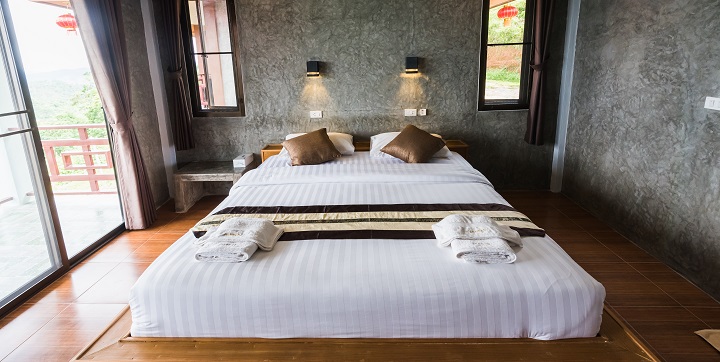
Overlength bed
Most people are accustomed to sleep in a 200 cm long bed, even if you are actually too tall for it. The mattress should be about 20 cm longer than your body is tall – this creates relaxation. So if you are around 190 cm or taller, a 210 cm / 220 cm long bed allows you to stretch out and take the posture that suits you.
This also applies to your blanket, because if it is not long enough, the body will always pull together and cannot relax. At 180 cm or taller, the blanket should be at least 220 cm long.
Sustainability
Sustainability has today, primarily through the marketing of many large enterprises, become fashionable and with that things that are matters of course and regulated by law, are sold as sustainability.
For us, sustainability means both the consistent use of eco-friendly, eco-sourced materials and the production of high quality products, which will last for a long time.
Otherwise, what happens when products are at best suitable for quick, short-term use? They are replaced often and create needless mountains of trash. What happens when consumers can only afford to buy cheap products? They get ever poorer, as cheap products wear out and need to be replaced often. Not to mention mental and health issues caused by bad products.
Apart from the ecological and economical dilemma, that arises from substandard consumption, this is also about the cultural degradation of a society that consumes today, throws away tomorrow and the day after has little more than a memory of those things determining life. Good furniture, for example, grows over generations into the culture of a society and helps to document change, growth, memories of events; the so-called classics would not have obtained this status if they were made of inferior materials or manufactured poorly.
A good natural mattress can serve you for 10-25 years, depending on the quality and maintainance. Our products can do that!
Manual production is a part of the process, and so are fair working conditions.

Livestlye minimalism
The term minimalism becomes ever more popular. More often you read or see reports about people that intentionally live minimalistic.
In times of crisis like 2022, this topic speaks to even more people. The base concept of minimalism is not about saving money, rather it is about cleaning and sustaining a clear mind, as to much clutter clouds the senses. So it's not about owning as little things possible, but to be sensibly enquipped. Not to posses everything possible, but only those things that I need, things that help me to keep my life flowing.
Therefore one of the fundamental principles of minimalism is: You don't need many things for a good life, but good things.
Meaning: The few things that I really need, should be good quality, so I can use them sensibly and with joy.
And at this point minimalism meets quality mattress. One does not need an expensive bed (especially when money is tight), with backrest, bedslats, nightstand, etc. when a good mattress on the floor serves me the same purpose to have deep and peaceful sleep; where a bad mattress wouldn't do well even with designer bed.
Naturally we want and should be comfortable, and to live minimalistic does not mean to become like a monk. For each room, look for the necessary and sensible things ... those that simply do you good (be they sensible or not) ... und which are there without purpose, just because you got used to them. That is comparible to getting rid of old clothes, the most popular practice of minimalism. The same is sebsible for the office, the living room, the kitchen and lastly storage room, where everything has gathered that didn't have space elsewhere. Bring it to a charity shop, flea market or recycling center.
Anyone who tries it will soon notice the effect. We learn to focus on individual things and actions again, and if we surround ourselves with (a few) good things, we will enjoy them, be grateful for good quality and celebrate our lives. Two examples: A lousy mattress remains a lousy mattress even in the most beautiful surroundings and spoils our nightly rest, while a good one carries us through the night and lets us wake up refreshed and satisfied. A knife block full of semi-sharp knives turns cooking preparation into a fiddly task, while a single sharp knife turns cutting up food into a meditative pleasure.
Seen in this way, minimalism is an ode to the good life. And living in a minimalist way does not mean renunciation but rather refinement.
Why do natural fibers regulate bed climate
The body continuously emits warmth, about 35° on average. When this warmth escapes from under the blanket, we freeze.
This can happen with very smooth, highly heat-conducting fibers such as finely twisted cotton or linen fibers, but especially with poly fibers. However, cotton contains glucose and minerals as well as air, which is why it can store heat better. At the same time, however, the fiber is permeable to moisture.
Aside from warmth our body also emits moisture, also continuously via skin. When the heat and moisture come together, it becomes a little tropical under the covers and other influences such as movement or shallow breathing can make us sweat. The natural fibers are moisture-permeable, they diffuse, and excess moisture and heat can escape. In contrast to polyester and similar materials, which cannot absorb moisture, so that only the gaps in the fabric remain as passageways.
That's why you can both freeze and sweat with polyester and similar materials. Of course, this can also happen with natural fibers at extreme temperatures, but at average temperatures, natural fibers provide climate control by storing heat and moisture up to a level close to body temperature and then easily releasing it.
With natural fibers, it is more the way they are processed that determines the level of warmth. Smoothly twisted and woven cotton conducts heat well and therefore gives a cool feeling, which is what we need in summer. Knitted jersey or brushed flannel or beaverteen hardly conducts at all, but instead stores heat, which is pleasant in winter.
So if you sweat or freeze in your bed, you can easily compensate for it with the right natural materials.
Which slatted frame?
Why solid bed slats are the right choice.
The core question is: What is the function of the slatted frame?
The slatted frame lifts the mattress off the floor and, thanks to this distance and its slatted structure, ensures permanent ventilation. That's it.
Some special slatted frames can also follow the contours of the body and, together with the right mattress topper, provide sensible support for sensitive people.
Spring wood slatted frames, the simpler the worse, form a depression in the middle when loaded, which is bad and they are also springy, which creates unrest.
A suitable slatted frame has stable, as inflexible as possible slats, preferably made of unpainted solid wood (diffusion), with a small distance between them so that the mattress does not get caught in between.
Whether they are roll-up slats or framed slats does not matter for function.
Sleep Cycle
Sleep goes through different stages, which are measured using different brain frequency. It starts with falling sleep, the so-called alpha phase (meditative phase). The brain reaches a vibration frequency of about 13 Hz and we are in the transition to light sleep.
From there it quickly goes into deep sleep and below 4 Hz, intervening repeated REM phases. At the beginning of the night more “deep sleep phase” (1-2 hours), later increasing REM (1-2 hours), most of the time, however, light sleep (3-4 hours).
At night, or the beginning of resting, glands pour out large quantities of growth hormones, which provide for the cellular regeneration. It works best during the sleep, since most organs are hardly working. Blessed is the one, whose sleeping pad is so strong and resilient that the body can maintain a safe position, move without using all the musculature and keep these biological processes working.
Movements occurs predominantly in the REM phase when moments of the day are discharged and of course in light sleep, so that all parts of the body remain balanced in the various positions. 30 to 60 movements take place in the average natural sleep procedure, and again here a good elasticity of the base is required.
Both interesting and unexplored is the alpha phase, the door to the sleep, during we can also hover between conscious and subconscious mind and in an energetic way contact others. It is also what characterizes the newly discovered power napping during the day.
This is just a summary of a very complex process that we by long do not understand - so there is still only a series of hypotheses about the meaning and function of the establishment sleep. The only sure thing is that it is essential for Homo sapiens, and preferably takes place in the dark because we then produce melatonin, the body's natural sleep aid.
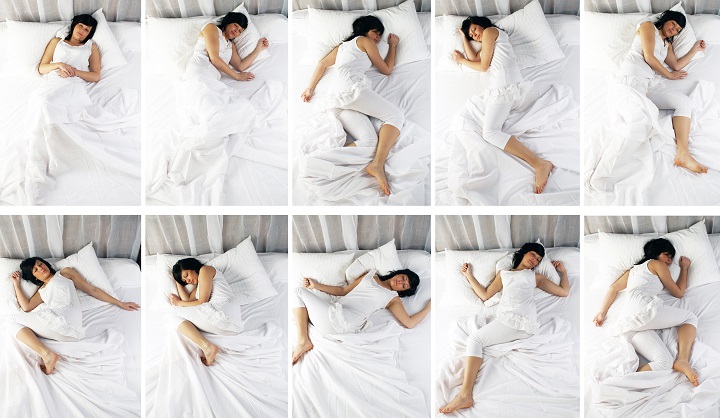
Sleeping Disorders
More often than it should be, clients come to us with acute health problems. They happen so often because many people wait too long to buy a better mattress and/or lay on an inadequate and poor surface.
Buying and inadequate surface can happen due to false advertising of big companies, who usually relate their products to a certain level of quality that they sure do not have. This can be solved easily with an honest consultation and good quality products.
We cannot provide any kind of medical consultation, instead we will provide you with general experiences and some helpful methods, that we collect and learn day by day, combined with our high-quality products and the best you can get from them.
Sleeping disorders or back pain can be caused by an infinity of reasons. The individual physiognomy and (possibly unfavorable) life guidance can be some of them. Osteopaths, doctors and pharmacists will help you with that. We will help you by providing a good (and perfect for you) mattress.
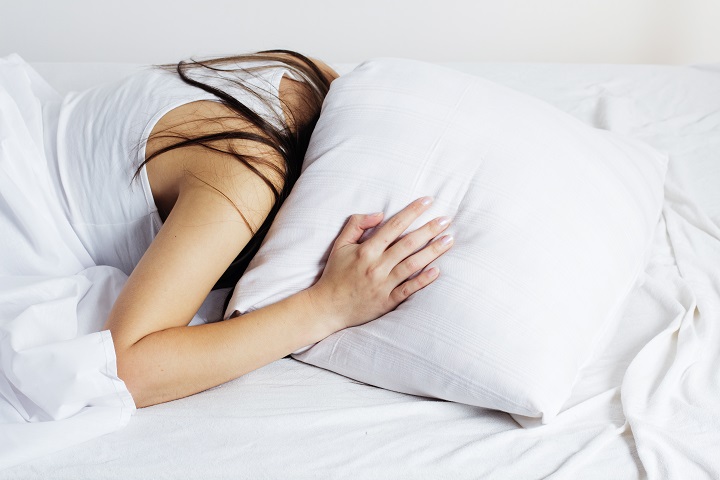
Sweating, freezing, agitation, tension…
Sweating at night is a problem, which can be caused by inappropriate nutrition, metabolism problems or a bad ventilated bedding.
Who sweats a lot at night should have mattress, sheets and blankets made of materials, that easily diffuse humidity. Natural latex mattresses can do it and so can sheets made and filled with natural materials. Synthetic materials and feathers cannot diffuse humidity, because they can only absorb it.
Merino, cotton, silk, camel hair and similar materials can solve this problem. Sheets and blankets made of cotton (or half-linen) are even better. If the sweating then persists, even after you change all your bedding and opened the windows, please search for a doctor. Low consume of water can also cause it.
Freezing at night is a problem caused by the aging of the skin – decrease of skin resistance. Going to bed to late can also influence the body negatively, because the body temperature decreases a little at night, especially around 2-3 a.m., which makes falling asleep around this time very difficult. At the beginning of the night, a few carbohydrates can help keep the energy levels high, which means, high body temperature.
Just like sweating a lot at night, freezing can be caused by mattresses, sheets and covers made of synthetic materials: they don’t retain warmth. We advise in this case our double duvet made of natural materials. Duvets filled with camel hair or cashmere will help people who freeze at night, because both materials diffuse humidity and keep warmth very well.
Agitation while falling asleep or even during the whole night can be solved in many ways. We go sleep when we are tired, so do not go to bed hungry, try not to overthink daily problems, instead think of nice things. A small meditation, listening to calm music, avoid using the computer or watching television in bed, instead reading a book…
The bed itself also influences a lot the sleep. Synthetic materials – specially the cheap ones – produce electrostatic tension. Innerspring mattresses not only produce a lot of electrostatic tension, which can lead to a nightmare, but are also responsible for the “trampoline effect” the heavier you are.
Agitated people need a firm, stable mattress, something that an innerspring mattress (especially if bigger than 100 cm width) does not provide. The slatted bed frame also influences the feeling, especially from sensitive people.
Pressure tension is felt predominantly from side sleepers on the hips and shoulder, when the mattress is too hard or inelastic. On the side, you have a smaller contact surface, which means your body weight lays on just a few points. In this case, we also advise changing the mattress or getting a topper, the extra light wool W4 and the ‚game-changer‘ X5 /sensitive are excellent for this.
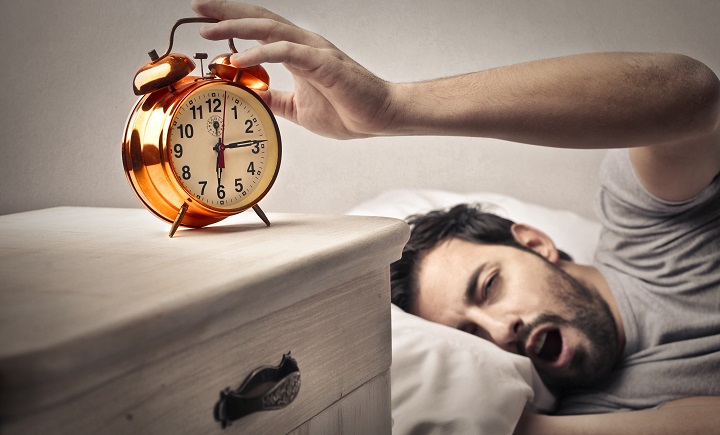
Tension (in the morning, after waking up) on the neck are caused by a wrong pillow. The pillow of a side sleeper should be the perfect gap between the head and the shoulder, in a small size (we advise 40x80xm, bigger than that, like 80x80 cm, is unnecessary). It should also not be too soft, otherwise, the head will turn to the sides, on an uncomfortable position. If the back-sleeper’s pillow is too hard or too big, the head will be pushed forward (chin directed to the chest) and cause pain.
Stomach and back-sleepers will feel tension on the body in the mornings, if the mattress and the slatted bed frame are not enough support. If the body doesn’t sink at all into the mattress, the muscle tension will be high. If the body sinks too deep into the mattress, the chest or back will lay in an unhealthy position. To this problem, we advise a Zen with coconut fiber as a topper if your mattress is too soft or a Zen filled with just cotton, if the mattress is too hard.
Why are there so many bad mattresses on the market?
There are many answers to this question: the lack of interest for mattresses is one of them. Who cares about them anyway?... But why is that? What and where do we learn about our bodies and how to treat them?
Our knowledge about our bodies is so superficial (“be pretty, be on shape”) and we also lack on professional information: why aren’t orthopedists talking openly about how important it is to choose a right mattress?
We learn that a mattress is a necessary product without meaning. So, most people want to spend as little money as they can on it.
On one side is the supplier. Due to the deficit of interest and professionalized staff, this industry produces an attractively and cheap product, that seems to be of a good quality, but in the end, isn’t. There’s also a deficit of dedicated youth in development and management, because ... well, because it just does not seem interesting.
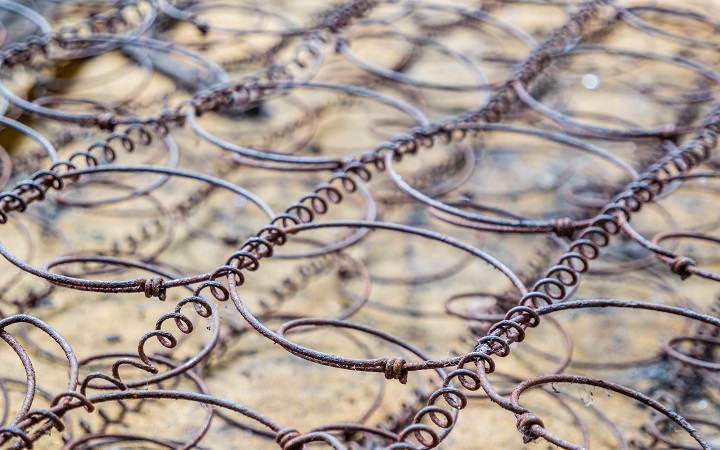
Bad consultation and intense competition decrease quality.
Then there is the pressure of the big distributors, who want to surprise us with special offers. In the meantime, these special offers drive to low labor costs (instead of a trained staff) and simple-return areas.
It is the same here as in cooking: the quality of the ingredients largely determines the outcome.
Our hope is that the next health reform or the one after recognizes the link between poor sleep culture and orthopedic treatment costs.
Then a good mattress is a duty, there will be more information on the subject... and so an informed consumer will turn into an interested customer.
Consultation from a Specialist
Do you have a question about sleep or how to find a product that perfectly fits your needs?
Please don't hesitate to contact us using either our contact form or fill out our consultation form.
Or just give us a call:
Tel.: +49 (0) 231 5898 112 0
Fax: +49 (0) 231 5898 112 9
EMail: mail@neonatura.de
The Neonatura media library
Here you can find short videos about the thema sleep and our products ... presented by Dietmar Wagner.
To the media library



